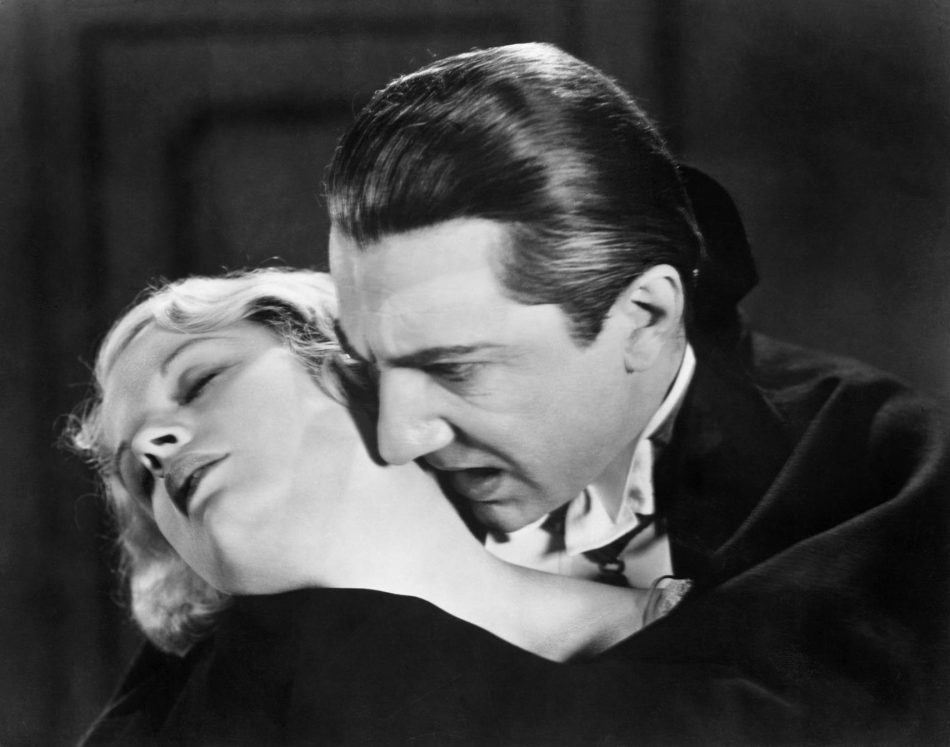
Bela Lugosi, an imposing figure at 6’1”, piercing blue eyes and Hungarian accent, was born to play Dracula and in 1927 he starred in the title role on Broadway in Dracula – The Vampire Play. He and the play were an instant success, so much so that when Universal were casting the film version, unlike popular myth and legend, Lugosi was a very serious contender.
As Lugosi biographer Gary D. Rhodes states: “Rumors in late June 1930 also suggested that Bela Lugosi, the star of the original New York production of Dracula – The Vampire Play, would play the role. Grace Kingsley of the Los Angeles Times argued on 21st June 1930 that ‘one cannot imagine anyone else doing it as well as he.'” (2014, 103)
On September 20, 1930, Motion Picture News announced: “Universal Bulletins that ‘all uncertainty about the role of Count Dracula in the Tod Browning production of Dracula has been dispelled by the signing of Bela Lugosi.'” (Rhodes 2014, 111)
Dracula (1931) was a box-office success, not only making an overnight star of Lugosi, but saving Universal from probably bankruptcy. Such was Lugosi’s impact on the audience at that time, that he became typecast as the evil Count. Following this Lugosi would portray a vampire three further times in his career.
In 1933, Lugosi parodied his Dracula persona in a Paramount short, Hollywood on Parade No. A-8, where he stalked Betty Boop (Bonnie Poe), bending over her throat and growling: “Boop! You have Booped your last Boop.” Following this, Lugosi joined Tod Browning and together at MGM, they remade Browning’s 1927 classic London After Midnight as Mark of the Vampire.
Originally titled Vampires of Prague, Mark of the Vampire had Lugosi play Count Mora, who after killing his daughter after an incestuous affair commits suicide by shooting himself in the temple. Though this is never fully explained in the film, the wound is quite clearly seen in both the film and publicity shots.
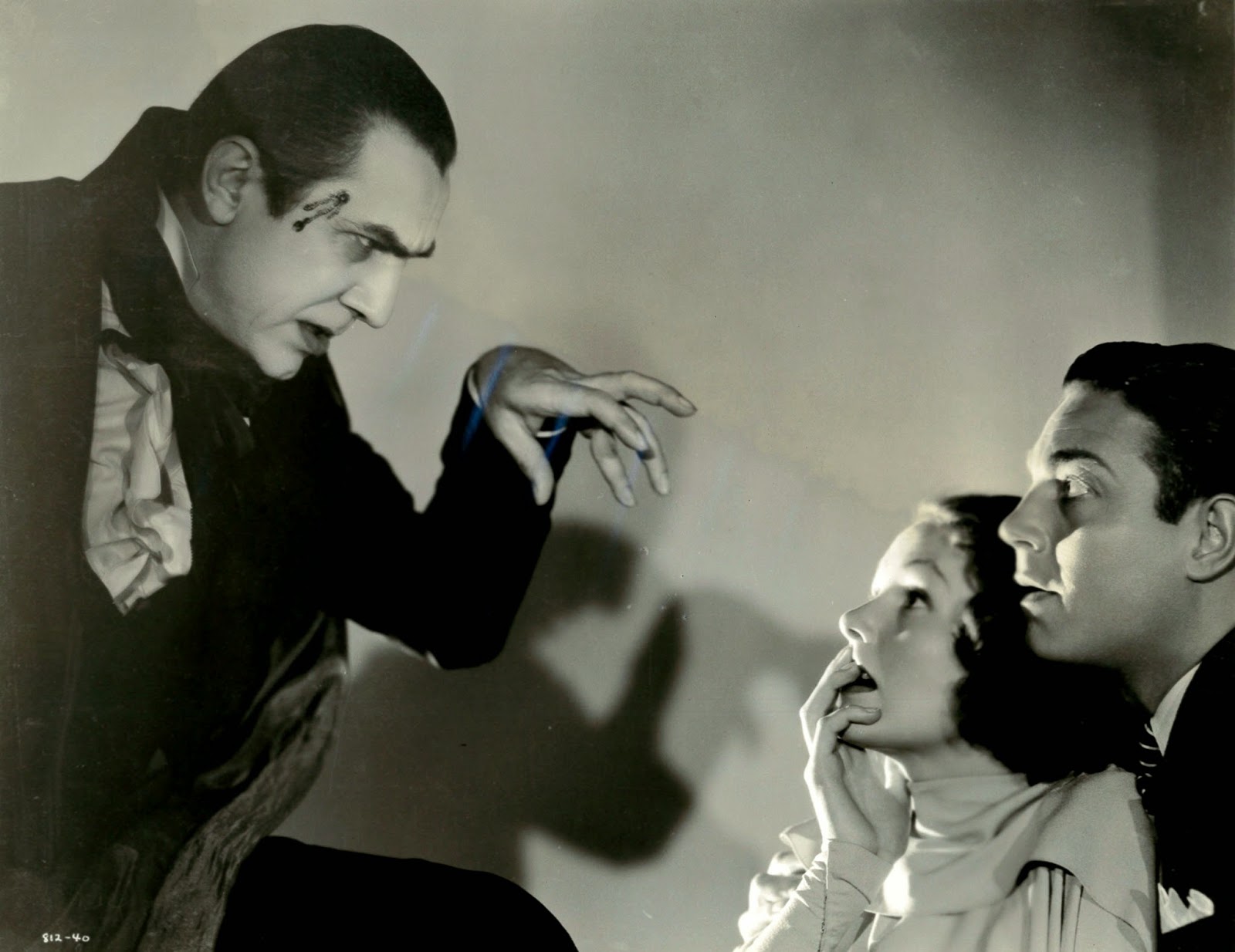
Rhodes points out that “Before its release, the studio cut Mark of the Vampire from 75 to 61 minutes.” (1997, 104) Further to this Browning had Mora and the inspector roles shared between two actors (Lugosi as Mora and Lionel Barrymore as Professor Zelen), rather than one actor as in the original film, which had Lon Chaney, Sr. portraying both roles.
At the end of the film, it is shown that the vampires are actually actors who have been hired to help catch a murderer. Despite having no dialogue until the last scene, Lugosi re-established himself as the Vampire in the public perception. Universal did not help matters as Rhodes explains: “Certainly more fearful than the cheat ending was a Universal Studios injunction to block the release of Mark, claiming it infringed on the Dracula (1931). Though Browning’s final film with Lugosi bears many similarities to the Universal classic, the now-despised ‘cheat’ ending helped draw a distinction between the two vampire films. As a result, a trouble-free MGM moved ahead with its release.” (1997, 105)
The next time Lugosi portrayed a vampire was in Columbia’s The Return of the Vampire (1944), in which Lugosi portrayed Armand Tesla, “the depraved Romanian scientist, who died in 1744, shortly after publishing his work on vampirism. Tesla’s morbid thirst for knowledge turned on him and after his death, he himself became a vampire.” (The Return of the Vampire 1944)
Columbia’s film was a “Dracula” film in all but name: “Universal Studios still owned the rights to Dracula, and not only refused permission for the Count’s name to be used, but also threatened legal action for Return of the Vampire’s similarity to the Bram Stoker tale.” (Rhodes 1997, 130) It again showed Lugosi at his most cunning and evil in his first appearance as a real vampire in a full length film since Dracula.
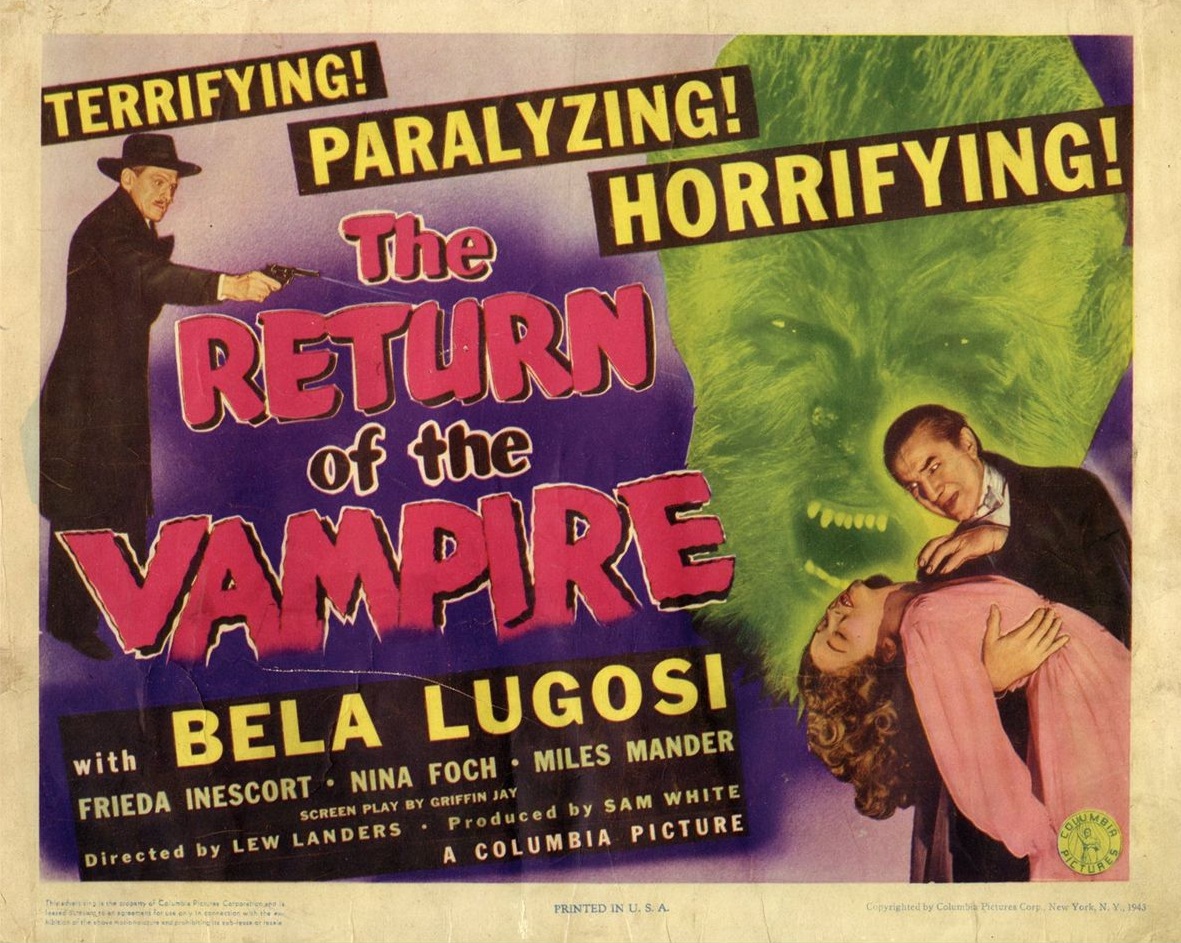
The screenplay was by Griffin Jay and based on an idea by Kurt Neumann and brought the vampire myth to war-torn England, thus giving the film a more “modern” setting than previous vampire films that had gone before. Although filmed in 1943, the film was not released until January 1944 so as not to compete with Universal Studios’ Son of Dracula (1943), released the previous November.
The film was directed by Lew Landers, who under the name of Louis Friedlander had directed Lugosi (and Karloff) in Universal’s The Raven (1935). The Return of the Vampire is unique in that it is the first film to feature a relationship between a vampire and a werewolf, and this would set the tone—in terms of relationship between the two species—in films to come.
It has been suggested elsewhere that this film was made to “cash in on the success of Frankenstein Meets the Wolf Man” (Butler 2014, 15) but that simply is not the case and there is absolutely no evidence to support that claim. If anything, The Return of the Vampire is—like Mark of the Vampire—a re-imagining of Dracula, but without the constraints of either the novel or the play.
Five years after portraying Armand Tesla, Lugosi returned to both the studio and the role that launched his career. In 1948, Lugosi again donned the cape and portrayed Count Dracula in Universal’s Abbott and Costello Meet Frankenstein. Directed by Charles T. Barton, it would be the last time that Lugosi would portray a vampire on the silver screen.
Originally titled The Brain of Frankenstein, the film finds Dracula wanting to replace the Monster’s brain with another, more docile brain leaving it easier to influence. On meeting Lou Costello, he realises that his is the brain that he needs and the comedy begins.
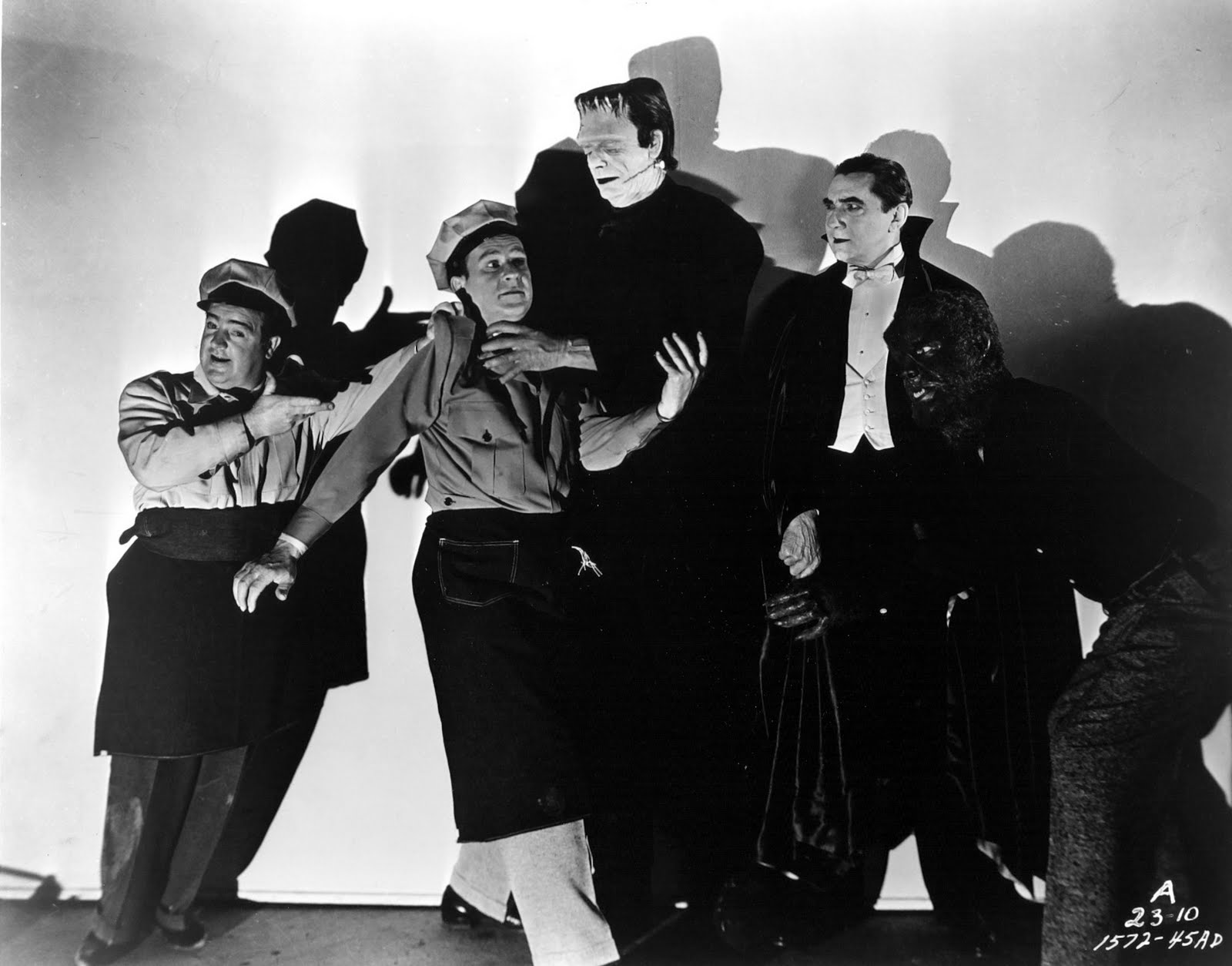
The film also features the Frankenstein Monster (Glenn Strange), the Wolf Man (Lon Chaney, Jr.) and in a voice cameo at the end of the film, the Invisible Man (Vincent Price). It has been suggested that the film was originally conceived as a straight thriller, but according to Gregory William Mank: “The brainstorm of resurrecting Frankenstein’s Monster, Count Dracula and the Wolf Man . . . belonged to producer Robert Arthur . . . Veteran Abbott and Costello writers Frederic Rinaldo and Robert Lees (as well as their long-term gag man John Grant) accepted the challenge of pounding out a script.” (1981, 157) Therefore it is obvious that the script was always conceived as a comedy rather than a thriller.
The film re-ignited the careers of Abbott and Costello and gave Lugosi a chance to truly shine again. Charles E. Butler suggests that Lugosi was lured back to Universal and “burlesqued his famous image” (2014, 15). For years there was an inaccurate myth that Lugosi’s then manager, Don Marlowe burst into the Universal offices and convinced them to hire Lugosi, days before shooting began saying that as Lugosi’s success in Dracula in 1931 had saved the studio from bankruptcy, they owed it to him to hire him for the role that he had made famous.
In fact Lugosi was not lured back nor was the Marlowe story as detailed above true. Universal documentation shows that Lugosi was cast on January 16, 1948 to reprise his famous role. Marlowe was indeed Lugosi’s manager at that time, and had therefore negotiated his contract.
With regards to being burlesque, Lugosi himself had this to say when talking to a reporter in 1948: “There is no burlesque for me. All I have to do is frighten the boys, a perfectly appropriate activity. My trademark will be unblemished.” (Rhodes and Kaffenberger 2012, 119) Indeed, his trademark was unblemished, the script treated the character of Dracula with reverence and the cast treated Lugosi with the respect that he deserved.
Butler then goes on to state that Lugosi was “forced into films on the poverty row that were general slap stick comedies that ran his image into the ground quicker than a stake through the heart.” (2014, 16) This is incorrect. The earliest “parody” of Lugosi as The Count came, as I mention above in Paramount’s Hollywood on Parade.
Throughout his career Lugosi walked the line between the major studios: Universal, Fox, Paramount, Columbia, Warner Bros, MGM and United Artists and the independent studios such as Monogram, Principal, Imperial- Cameo, Hammer, Victory as well as others. From Dracula (1931) to Abbott and Costello Meet Frankenstein (1948), Lugosi starred in 58 films, series, and shorts.
Out of those fifty-eight, 37 were for major studios, with Universal being the major employer with 16 Lugosi films, followed by 20th Century Fox / Fox and RKO both with five Lugosi films each. Paramount had four, Columbia three, MGM two and United Artists one. The biggest independent employer for Lugosi was Monogram Pictures with 10 films. That is hardly being “forced” into Poverty Row films, though in the end they kept him on the screen, when the major studios had lost faith in him.
Several films appeared to parody his Dracula role. The first being the Monogram picture, Spooks Run Wild (1941), wherein the East Side Kids encounter a mysterious killer known as the Monster. Bojarski states: “In Lugosi’s second film assignment for Sam Katzman, an unsubtle attempt was made to exploit his Dracula image . . . Lugosi wears cape and evening clothes, travels with coffins and is hunted by a Van Helsing facsimile . . . Lugosi wisely resisted parody and played his role straight.” (1980, 172)
Butler implies Spooks Run Wild was made after Abbott and Costello Meet Frankenstein, but it was actually made seven years previously. Another film that may seem to have “Dracula implications” is Mongram’s 1942 thriller The Corpse Vanishes in which Lugosi plays Dr Lorenz, who sleeps in a coffin and kidnaps brides from their weddings to drain their glandular fluids to keep his wife alive.
The next time Lugosi wore his Dracula cape was in Scared to Death (1947), the only colour film Lugosi made. Bojarski says: “Heading a good cast was Lugosi trying hard for believability in his role of Leonide, a mysterious stage magician wearing a Dracula-like cape, doing his best to appear guilty until the end.” (1980, 221).
From 1936 through to his death, Lugosi continued to work even when the Horror film cycle dried up, as Gary D. Rhodes and Bill Kaffenberger have proven in their 2012 book No Traveler Returns: The Lost Years of Bela Lugosi—that although largely out of the Hollywood system, Lugosi kept working in vaudeville, summer stock and magic shows.
Of course one could argue over the quality of the scripts that Lugosi chose to undertake, but again his management must take some responsibility for those projects. After Abbott and Costello Meet Frankenstein, Lugosi would only make five more films: Mother Reily Meets the Vampire (Renown Pictures, 1952), Bela Lugosi Meets a Brooklyn Gorilla (Jack Broder Productions, 1952), Glen or Glenda (Screen Classic Productions, 1953), Bride of the Monster (Rolling M Productions, 1955) and The Black Sleep (United Artists, 1956).
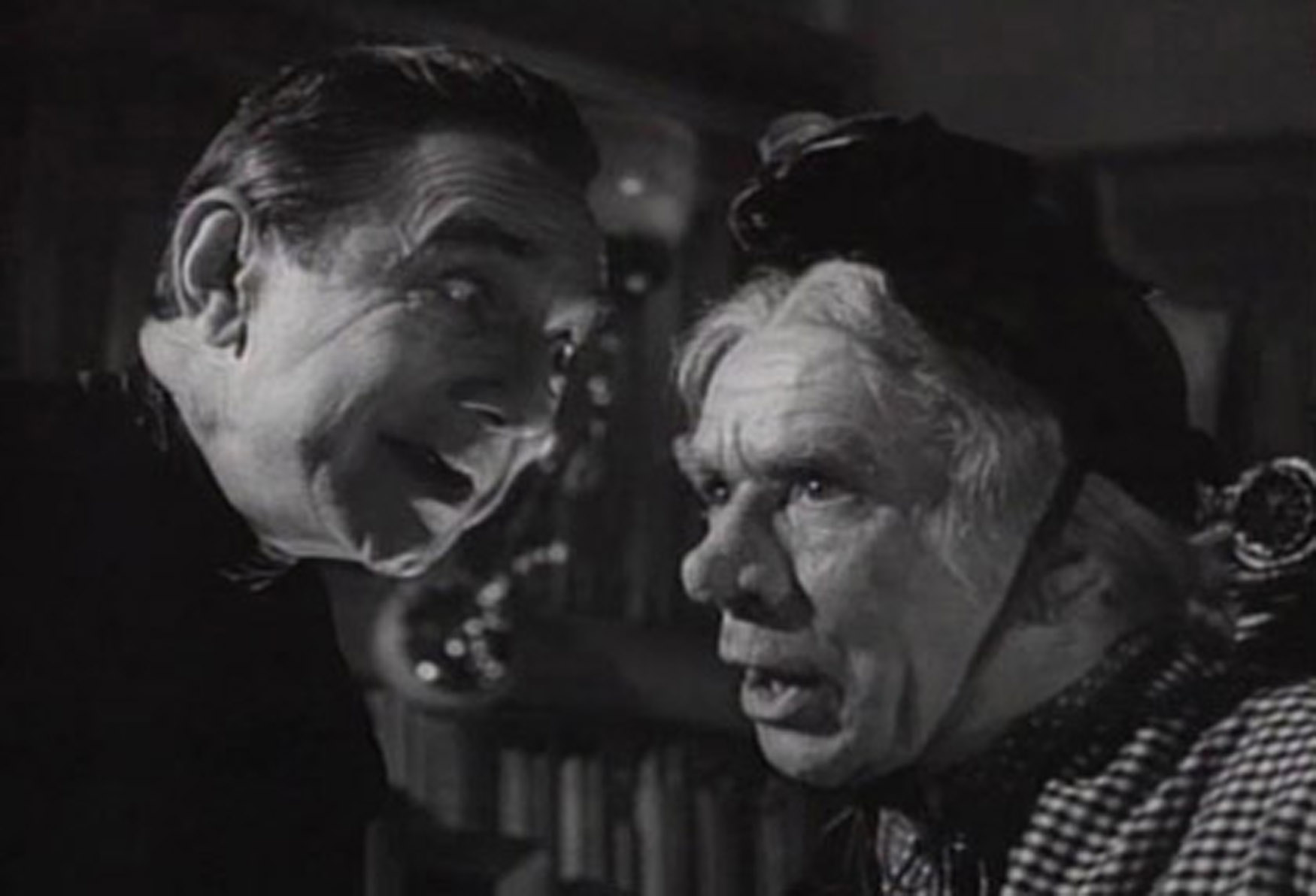
Plan Nine from Outer Space (Renyolds Pictures, 1959), was posthumously released and is considered Lugosi’s final role. The footage that director Edward D. Wood, Jr. took of Lugosi was for another project and following the actor’s death, Wood decided to make a film around the five minutes of footage.
Of the five films made prior to his death, only Mother Reily Meets the Vampire touches on the vampire concept. It was the final film for Arthur Lucan’s Mother Reily creation that had first appeared in 1947. In it Lugosi plays a mad scientist, Von Housen, who believes he is a vampire and plans to take over the world with an army of robots. A mix up over a delivery of a robot to Mother Reily rather than Von Housen leads to the two meeting.
The film came about after Lugosi had completed a successful tour of England in a revival of Dracula – The Vampire Play. Despite having a Hollywood name attached to it, the comedy failed at the UK box office and struggled to find a US distributor.
Looking at the four Universal Dracula sequels, it is interesting to note that the myth that Lugosi was paid off so as not to appear in the film Dracula’s Daughter is still ongoing, despite there being ample evidence to the contrary. Although originally scheduled to appear in Dracula’s Daughter, the script that would have incorporated Lugosi in the opening sequence proved too much for the Breen office and they threw it out stating that it was un-filmable.
The script as they saw it had black magic, violence and the implication of multiple rapes that, had it been filmed, would have been banned indefinitely—and that is only after the censors had finished cutting it. As a compromise—and to keep continuity between Dracula and Dracula’s Daughter—Universal requested to use Lugosi’s likeness in the film and he agreed.
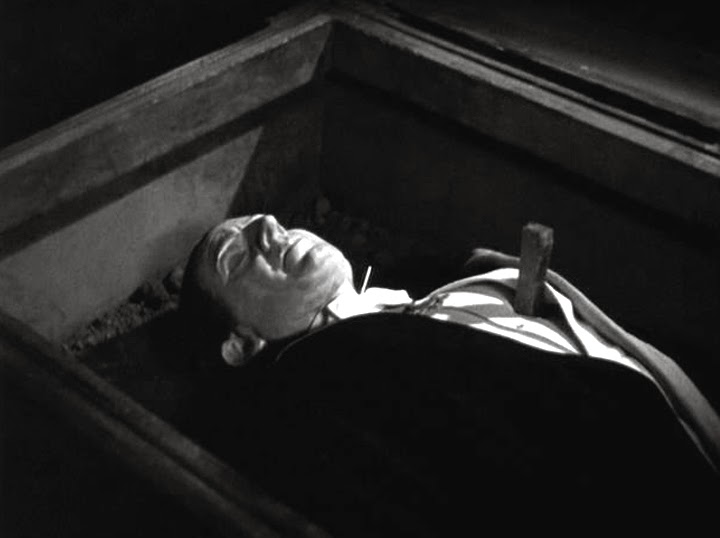
It was this contract that was to be a corner stone in Lugosi vs. Universal Pictures Co. Case 877975. Superior Court of the state of California for the County of Los Angeles as explained in Rhodes’ 1997 book Lugosi: His Life in Films, on Stage and in the Hearts of Horror Lovers. So Lugosi was paid so as the studio could use his image and not “paid off” as previously believed.
As early as 1931, Universal patented the titles to possible sequels to Dracula, including The Return of Dracula and Son of Dracula. In 1943, Universal decided to make Son of Dracula. It is unclear as to why Universal did not hire Lugosi for the role. Originally titled Destiny, the script title had changed by February 13, 1943 to Son of Dracula.
Perhaps the studio’s annoyance over Lugosi’s performance in Frankenstein Meets the Wolf Man (1943) or the fiasco of scripting Dracula’s Daughter may have contributed. Whatever the case may be, Lugosi was out in the cold. Instead, Lon Chaney took on the mantel of Dracula, which embittered Lugosi so much that come to making The Black Sleep in 1956.
He still held a grudge against Chaney: “The director also recalled this incident, saying ‘Chaney was sore at something Lugosi brought up [supposedly, Lugosi had expressed his resentment over Chaney’s usurpation of the role of the vampire in Son of Dracula] and it nearly came to a fight. Chaney picked him up a little. But put him down – we stopped him. We kept them apart quite a bit.'” (Lennig 2003, 439)
Both House of Frankenstein (1944) and House of Dracula (1945) should have starred Lugosi; he was scheduled to take part in House of Frankenstein, but was forced to bow out due to other commitments. Instead the role went to John Carradine, who would reprise the role in House of Dracula.
It would appear that Lugosi was not even considered for that film at a studio level, despite several newspapers mentioning his name in connection with this film, such as the Los Angeles Times February 17, 1945 issue: “There’s a new thrill for the horror picture followers in the offing. ‘House of Dracula’ is announced by Universal, and necessarily that won’t be complete without Bela Lugosi.” (Rhodes and Kaffenberger 2012, 34).
On his return from England in 1951, Lugosi told a reporter (below) as far as he was concerned “Dracula never ends” but on August 16, 1956 the final curtain dropped: Lugosi died from a heart attack.
[su_youtube url=”https://www.youtube.com/watch?v=YPOA1dS9YmU”]
Even now, Lugosi remains synonymous with the name Dracula. This is amazing in itself, given the sheer number of Hollywood heavyweights who have followed in his footsteps. His performances mesmerise modern audiences just as they did those who watched them in the 1930s and 1940s. As such, Lugosi was and still remains Dracula to many people.
This is all the more astounding given that in a career that lasted over fifty years, Lugosi only having portrayed that character twice in a full length film and as a vampire four times. All in all these four films: Dracula (1931), Mark of the Vampire (1935), Return of the Vampire (1944) and Abbott and Costello Meet Frankenstein (1948) established Lugosi as the ultimate vampire that has lasted sixty odd years after his death.
References
Bojarski, Richard. 1980. The Films of Bela Lugosi. Secaucus, N.J: Citadel Press.
Butler, Charles E. 2014. “Bela Lugosi’s Best Vampire Films.” IndieJudge, October, 12–17. Accessed November 20, 2014. http://issuu.com/indiejudge/docs/indiejudge_magazine_vampire_edition.
Lennig, Arthur. 2003. The Immortal Count: The Life and Films of Bela Lugosi. Lexington: The University Press of Kentucky.
Mank, Gregory William. 1981. It’s Alive! The Classic Cinema Saga of Frankenstein. San Diego: A.S Barnes & Co.
The Return of the Vampire. 1944. Directed by Lew Landers. Culver City, CA: Columbia.
Rhodes, Gary D. 1997. Lugosi: His Life in Films, on Stage and in the Hearts of Horror Lovers. Jefferson, NC: McFarland.
———. 2014. Tod Browning’s Dracula. Sheffield: Tomahawk Press.
Rhodes, Gary D., and Bill Kaffenberger. 2012. No Traveler Returns: The Lost Years of Bela Lugosi. Duncan, OK: BearManor Media.
You can view an excerpt of Hollywood on Parade No. A-8 that features Bela Lugosi’s “Betty Boop” bit on YouTube. Ignore the date it list (1934): Wikipedia reveals it was released on March 10, 1933.
Be sure to check out the excellent Vampire Over London: The Bela Lugosi Blog which is filled with pictures, info and rarities.
For further reading on the adaptation of Bram Stoker’s Dracula (1897) from novel to film, I highly recommend David J. Skal’s Hollywood Gothic: The Tangled Web of Dracula from Novel to Stage to Screen (1990; 2004).
I like Dracula enough, but I really think there were a lot of missed opportunities in the film. Especially for Lugosi who in some respects seemed more like a guest star in his own film. I really liked Return of the Vampire for a number of reasons but I think it gave more for Lugosi to…sink his teeth into. 🙂 And I really think he as Dracula was done more justice in (ironically) Bud Abbot and Lou Costello Meet Frankenstein.
Laura! It’s ‘Abbott’ not “Abbot’ for god’s sake!
Bela Lugosi made only 9 films for Monogram, not 10. And “Scared To Death” (made in 1946 but not released until 1947) was not his only color film. He had played a small part in the Warner Bros.-Vitaphone feature “Viennese Nights” (made in 1930) that was filmed in early 2-strip Technicolor.
I WAS BORN ON THE 20TH OCTOBER LIKE BELA LUGOSI THE DAY I WAS BORN DRACULA AD 1972 WAS AT ITS PEAK AT THE BOX OFFICE HAVING BEEN RELEASED 3 WEEKS BEFORE,THE CULT DRACULA SONG BELA LUGOSI,S DEAD BY BAUHAUS WAS WRITTEN RECORDED AND SUNG BY MY EX GIRLFRIENDS EX BOYFRIEND PETER MURPHY.I HAVE A LARGE WIDOWS PEAK AND I AM ALLERGIC TO SILVER….STEVE HARNEY THE VAMPIRE [STE VARNEY THE VAMOIRE]….ITS STE THOR DRACUL[ITS D FOR DRACULA] XX X WITCHDOCTER ACULA VOODOO BLACK MAGIC ….ONE OF MY GIRLFRIENDS USED TO CALL ME LITTLE RED EYES….I AM THE EYE[HIGH]I[AYE] I AM THE REAL COUNT DRACULA XX X 72 IT GOES LUGOSI”DRACULA”THEN ITS 10 YEARS LATER WITH”BLOOD OF DRACULA”THEN TO THE PRESENT WITH “DRACULA AD 1972″DRACULA WILL LIVE FOREVER “LOVE NEVER DIES” D